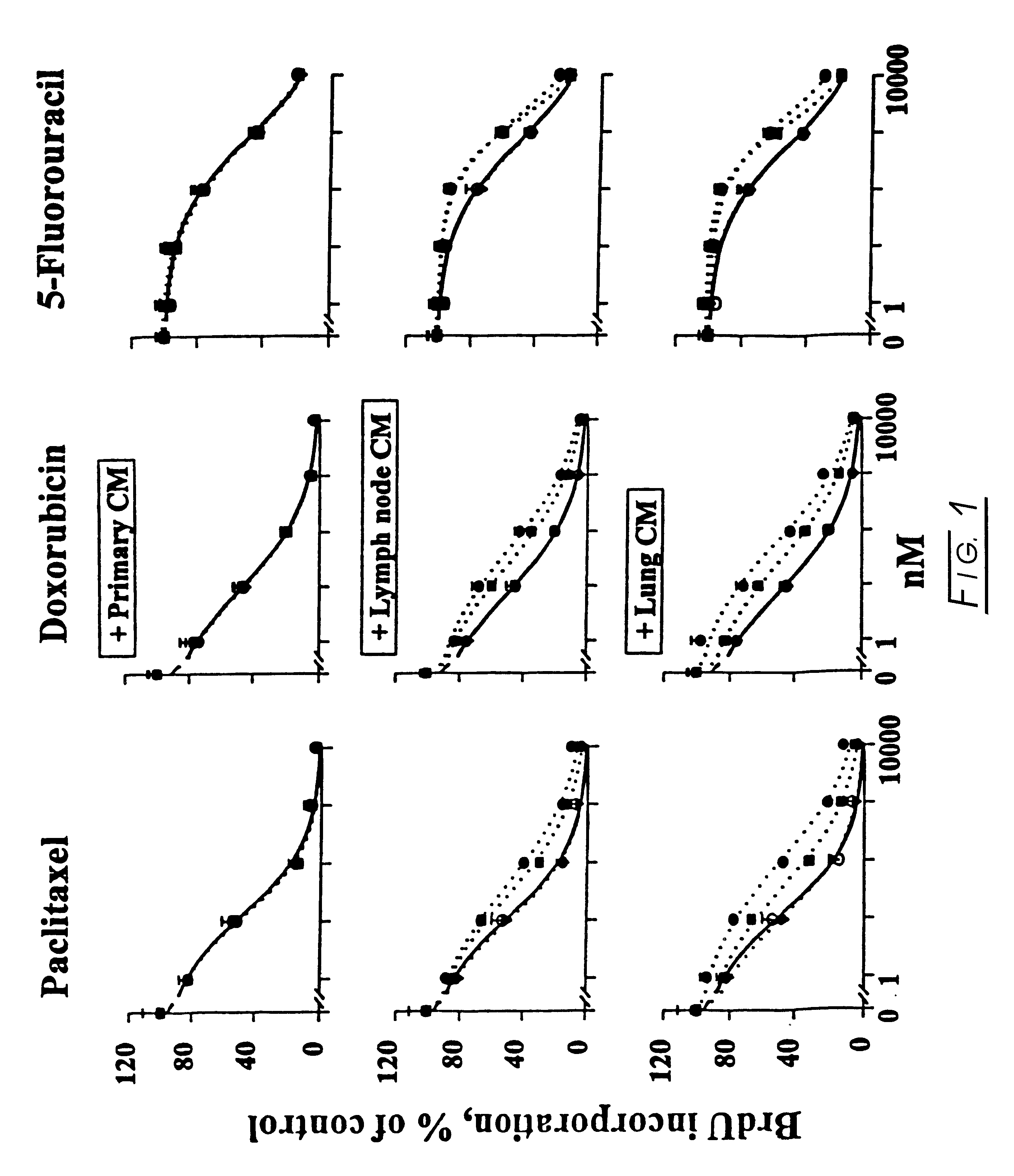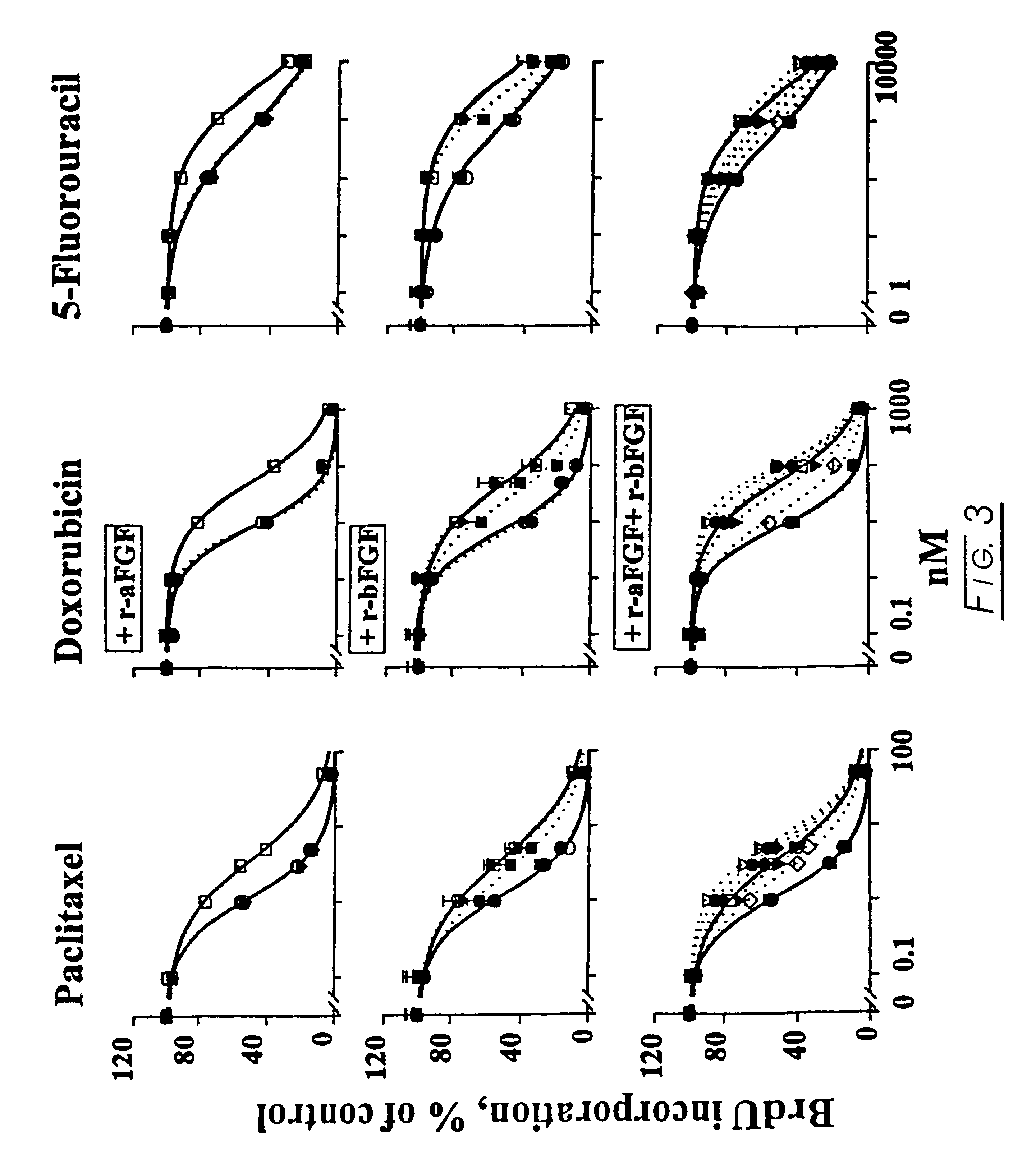Methods and compositions for modulating cell proliferation and cell death
a cell proliferation and cell death technology, applied in the field of methods and compositions for modulating cell proliferation and cell death, can solve the problems of human xenograft tumors including lung metastases, subcutaneous tumors in mice, shrinkage and eradication of human xenograft tumors, etc., to reduce the cytotoxicity of anticancer agents and enhance the in vitro and in vivo activity of anticancer agents
- Summary
- Abstract
- Description
- Claims
- Application Information
AI Technical Summary
Benefits of technology
Problems solved by technology
Method used
Image
Examples
examples
The invention now being generally described, it will be more readily understood by reference to the following examples which are included merely for purposes of illustration of certain aspects and embodiments of the present invention, and are not intended to limit the invention.
The reagents and experimental protocols used in the appended examples are briefly described below.
Chemicals and reagents
Mouse anti-human aFGF and bFGF monoclonal antibodies were obtained from Sigma; lactate dehydrogenase (LDH) assay, bromodeoxyuridine (BrdU) ELISA and human recombinant r-aFGF and r-bFGF from Boehringer Mannheim. The anti-aFGF antibody reacts with naturally occurring aFGF and human recombinant aFGF and does not cross-react with bFGF (Ichimori, Y. et al. (1991)) Biochem. Biophys. Res. Commun. 175:291-297). The anti-bFGF antibody was generated using the 18 kDa human r-bFGF, is specific for bFGF and does not cross-react with aFGF (Watanabe, H. et al. (1991) Biochem. Biophys. Res. Commun. 175:229-...
example i
Contribution of Tumor Environment and Tumor Location to Resistance to Anticancer Agents
This example describes three studies showing (a) a novel epigenetic mechanism of broad spectrum chemoresistance that is mediated by extracellular factors present in solid and metastatic tumors, and (b) loss of these factors upon removing tumors from metastatic sites and / or disrupting the tumor microenvironment. The results supporting these conclusions are provided in Table 1 below. The studies were performed using anticancer agents that have diverse structures and action mechanism, including paclitaxel (an antimicrotubule agent), doxorubicin (a topoisomerase II inhibitor) and 5-fluorouracil (an antimetabolite). Similar results were found for all three drugs.
The first study compared the chemosensitivity in histocultures of rat primary and metastatic tumors, where the heterogeneous cell types and the 3-dimensional structure of solid tumors are maintained, to the chemosensitivity in the corresponding...
example ii
Induction of Resistance to Anticancer Agents Due to Extracellular Factors in Solid and Metastatic Tumors
This example describes the experiments confirming the induction of chemoresistance by extracellular factors in metastatic tumors, and indicating a progressive loss of these factors upon passaging metastatic tumor cells in monolayers.
CM from rat tumor cultures was collected and evaluated for its effect on chemosensitivity. This and subsequent experiments were performed using rat primary tumor cells and human prostate tumor cells. Qualitatively similar results were obtained for both cell types, indicating the general nature of the observations (FIG. 1). CM derived from histocultures and early monolayer cultures of metastases (referred to as active metastatic tumor CM) induced a 3- to 10-fold resistance to drugs (p<0.05), whereas CM from late monolayer cultures of metastatic tumors and CM from primary tumors (referred to as inactive CM) had no effect.
PUM
| Property | Measurement | Unit |
|---|---|---|
| concentration | aaaaa | aaaaa |
| concentration | aaaaa | aaaaa |
| concentration | aaaaa | aaaaa |
Abstract
Description
Claims
Application Information
 Login to View More
Login to View More - R&D
- Intellectual Property
- Life Sciences
- Materials
- Tech Scout
- Unparalleled Data Quality
- Higher Quality Content
- 60% Fewer Hallucinations
Browse by: Latest US Patents, China's latest patents, Technical Efficacy Thesaurus, Application Domain, Technology Topic, Popular Technical Reports.
© 2025 PatSnap. All rights reserved.Legal|Privacy policy|Modern Slavery Act Transparency Statement|Sitemap|About US| Contact US: help@patsnap.com



